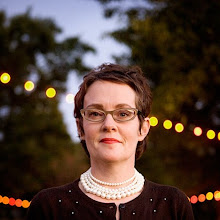This is the first in a three-part series “Has there ever been a museum with the courage and sophistication to combine both “great architecture” and “great museum”?” completed by Eddie on a flight between New York and Charlotte on August 5, 2009. To his notes I will append a few thoughts.
Eddie Jones is the founding principle of Jones Studio, Inc., and together with his rakish brother Neal Jones and a staff of smart, funny architects and designers, have created elegant, soaring public and private buildings.
I did a project, one of my favorite ever, with Jones Studio at SMoCA, several years ago. When Jones Studio came to visit SMoCA for a site visit I remember saying to them that we'd love to do a show with them but I disliked architecture shows, they are rather dull, and a museum needs to be about life.
The entire studio moved into the gallery and worked for four months, during which time they engaged with the deliberate, and hapless, audiences who wandered in. I've never seen a museum space so energized and vibrant, and together we tried to understand what this experience meant for museum practice as it intersects with architectural practice.
This series is a result of our talking about what we like about museums, and whose fault is it if they don't work.

image copyright: http://museumarchitecture.org
Eddie Jones:
“Architecture, of all the arts, is the one which acts the most slowly, but the most surely, on the soul.” – Ernest Dimnet, The Art of Thinking
Yes, my art buddies, architecture is art. In fact, only when a building achieves the elusive quality of art can it be described as architecture. If I really want to piss you off, I can argue it is the most difficult of art forms because it necessarily involves the responsibility of human habitation and, as it has been said, “Architects have to leave their work out in the rain!”
Therefore, I find the programmatic intersection of art and architecture, i.e. the art museum, to be a fascinating challenge and an opportunity to explore the relationship of museum visitor, curator, artist and architect.
The Guggenheim Museum is currently celebrating its 50th anniversary, appropriately with a Frank Lloyd Wright exhibition of drawings and models. Much has been written about the extraordinary original drawings and the buildings, which changed the course of American architectural history.
The Guggenheim, like it or not, remains a remarkable and unique way to experience a one-of-a-kind art museum. Study the circulation diagram: few remember Wright’s intention to take people to the top level, allowing a slow, thoughtful decent along the famous spiraling ramp. As of this writing, it was only a few hours ago I spent the morning reveling in the drawings and exhilarating space of Guggenheim.
However, the curating was weak and uninspired. For example, upon entering the rotunda, people were immediately directed “up” the ramp opposite to the architect’s intention.
Hence a dilemma: are curators unable or unwilling to cope with a unique exhibition space OR are architects making the art secondary to a dominant form?
I believe Wright sincerely aspired to connect the act of viewing art with the form of the space to the point that the physical form was a direct result of the exhibition experience. Not only was the circulation augmenting and simplifying movement, it was balanced with a central day-lit point of reference, allowing visitors to see where they had been and where they were going. The display walls were tilted outward and lit from above, not unlike the painter’s easel.
Marilu's counterpoint:
I didn't see the Wright show at the Guggenheim, but like architects, some curators get it, some don't. I am often shocked at curator colleagues who think two-dimensionally about space, where objects are little toys moved around inside a maquette of the space, not taking into account the other elements that come into play between works and between work and audience.
When I moved to New York in the 1980s I visited the Guggenheim and went up to the top and worked my way down, as Wright intended. I felt a little nauseous the whole way, as if I was being sucked into a giant drain. One of my first internships was for Tom Messer, where I did some office work for the reinstallation of the Guggenheim's Justin K. Thannhauser Collection. The space was cramped and dingy, but that is being corrected now.
What we need to consider with the Guggenheim, however, is that Wright was first contacted about the commission in 1943 and the building completed in 1959. The world--and the art world--changed totally in that time, and despite its modern feel, the museum has limitations a Beaux Art classic like the Met does not have. (And no way he could have predicted Museum's extreme fascination with the new).
Still, I always have the feeling while in the museum that Wright preferred small, obedient art works, nothing fussy, nothing dramatic--no scratchy detritus from World War II, no Abstract Expressionism, no Bay Area Funk--just the jewel-like objects in the Guggenheim's vaults.
Frank Lloyd Wright was the first starchitect, the one whose overarching design sensibility freed architects to dominate the discourse about art--a domination many museum curators have to deal with every day.




No comments:
Post a Comment